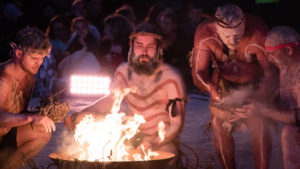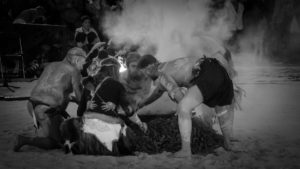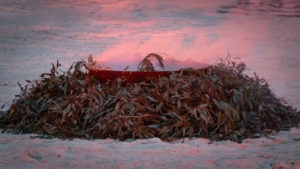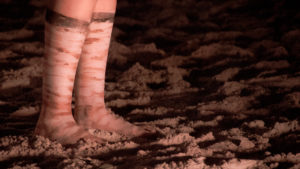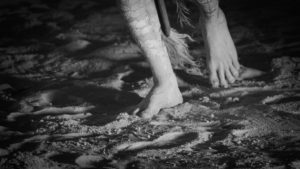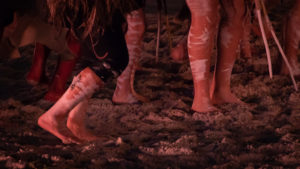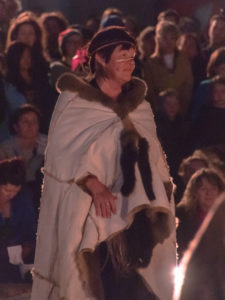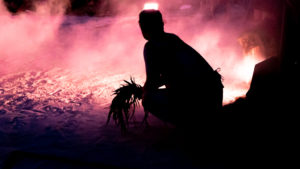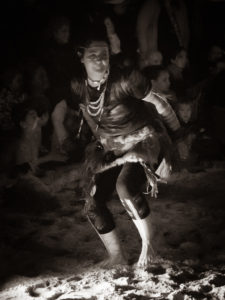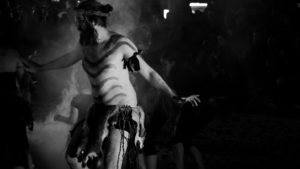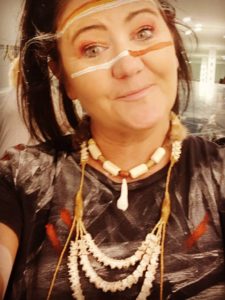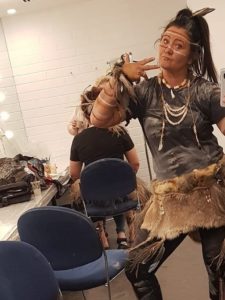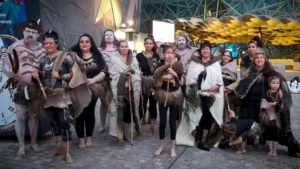Tanderrum – performing together as one Kulin Nation

A crowd gathers in Melbourne’s Federation Square around an intricate sand circle and it’s not long before people start jostling for position to see what will unfold at this year’s Tanderrum. As more and more people arrive, the event coordinators struggle to keep people off the sand pathways that will be used by the performers to enter the ‘stage’.
The central firepit is lit, but whether it is the type of wood or the green gum leaves the fire struggles to remain alight. Fire carriers from each Kulin group gather around the pit to help get the fire going so they can take smoking embers back to their mob. And so Tanderrum begins…
Uncle Jack Charles’ voice booms over the speaker system above us as he describes the importance and role of Tanderrum. How it is a gathering of the five Kulin Nation language groups – Wurundjeri/ Woiwurrung, Boon Wurrung, Taungurung, Wadawurrung and Dja Dja Wurrung, where they get to perform traditional dances and sing in their own languages, to keep the songlines of Bunjil (the creator, wedge-tailed eagle) alive.
The Elders from each group enter the circle and invites their mob to perform the first of three dances. Each dance is accompanied by singing and clapsticks or didgeridoo. With the smoke from the firepit billowing around everyone, the sand crunching under the dancing feet and the low-level lighting, the mood is truly powerful.
The first year Taungurung dances were entry, Taungurung nulla, the creation story of the black swan (ganawarra) followed by the final dance being the lyrebird. The next year dances were Taungurung nulla entry, Ancestors Dreaming and William Barak song for the final dance. This year, 2018, we had the Kulin family entry, Ancestors Dreaming and finished with a William Barak song, which has not been sung for over 100 years. Every year has changed for me as different people dance, there’s change in the environment and the crowd gets bigger. – – – Cassie Leatham
Tanderrum is also a welcome to country ceremony. Visiting First Nation Peoples were invited to get smoked in the sand circle as a welcome to Kulin Country. Special guests from the Melbourne International Arts Festival were also invited to enter the circle and take in (accept) the Lore of Bunjil whilst performing at the Festival.
There was one old Aboriginal fella who, as he walked out of the circle, commented to no-one in particular, ‘Thanks for Welcome’. This is truly a powerful message and respectful event. – – – Kelly Coleman
This was a time for celebrating as one nation, together, in front of thousands of local, national and international visitors.
The preparation for Tanderrum takes 6 months. Adornments are made, skirts and lap laps are made, dances are created with song. The rehearsals are endless. We attend camps and gatherings to perform and perfect our dances and travel long distances to join other mobs in dance and song. The anxious nerves set in on the day. We’re excited to share the hard work in one hour, the sharing of the efforts in costume, and being a part of history as we guide the youth into the future with knowledge of ceremony. This is why I participate. – – – Cassie Leatham
- Taungurong Mob. Photographer: Victoria Morphy
Written by Cassie Leatham and Kelly Coleman.
Photos by Kelly Coleman and Cassie Leatham, unless credited.

